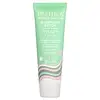What's inside
What's inside
 Key Ingredients
Key Ingredients

No key ingredients
 Benefits
Benefits

 Concerns
Concerns

 Ingredients Side-by-side
Ingredients Side-by-side

Water
Skin ConditioningSodium C14-16 Olefin Sulfonate
CleansingCocamidopropyl Betaine
CleansingGlycerin
HumectantSodium Cocoamphoacetate
CleansingSodium Chloride
MaskingAcrylates Copolymer
Betaine
HumectantPhenoxyethanol
PreservativeParfum
MaskingPolyquaternium-7
Bis-Aminopropyl Diglycol Dimaleate
Skin ConditioningGuar Hydroxypropyltrimonium Chloride
Skin ConditioningEthylhexylglycerin
Skin ConditioningHexyl Cinnamal
PerfumingLimonene
PerfumingCitric Acid
BufferingSodium Benzoate
MaskingAcid Violet 43
Water, Sodium C14-16 Olefin Sulfonate, Cocamidopropyl Betaine, Glycerin, Sodium Cocoamphoacetate, Sodium Chloride, Acrylates Copolymer, Betaine, Phenoxyethanol, Parfum, Polyquaternium-7, Bis-Aminopropyl Diglycol Dimaleate, Guar Hydroxypropyltrimonium Chloride, Ethylhexylglycerin, Hexyl Cinnamal, Limonene, Citric Acid, Sodium Benzoate, Acid Violet 43
Sea Salt
AbrasiveCocamidopropyl Hydroxysultaine
CleansingGlycerin
HumectantSucrose
HumectantGlyceryl Caprylate/Caprate
EmollientSodium Methyl Cocoyl Taurate
CleansingSodium Cocoyl Isethionate
CleansingJojoba Esters
EmollientCharcoal Powder
AbrasiveRosmarinus Officinalis Leaf Extract
AntimicrobialLavandula Angustifolia Flower Extract
CleansingRosa Moschata Seed Oil
EmollientMentha Piperita Oil
MaskingMenthol
MaskingMelaleuca Alternifolia Leaf Oil
AntioxidantGlyceryl Stearate Se
EmulsifyingLactococcus Ferment Lysate
Skin ConditioningOryza Sativa Bran Extract
Skin ConditioningHelianthus Annuus Extract
EmollientTocopherol
AntioxidantSodium Benzoate
MaskingPotassium Sorbate
PreservativeSodium Gluconate
Skin ConditioningIron Oxides
Citric Acid
BufferingParfum
MaskingSea Salt, Cocamidopropyl Hydroxysultaine, Glycerin, Sucrose, Glyceryl Caprylate/Caprate, Sodium Methyl Cocoyl Taurate, Sodium Cocoyl Isethionate, Jojoba Esters, Charcoal Powder, Rosmarinus Officinalis Leaf Extract, Lavandula Angustifolia Flower Extract, Rosa Moschata Seed Oil, Mentha Piperita Oil, Menthol, Melaleuca Alternifolia Leaf Oil, Glyceryl Stearate Se, Lactococcus Ferment Lysate, Oryza Sativa Bran Extract, Helianthus Annuus Extract, Tocopherol, Sodium Benzoate, Potassium Sorbate, Sodium Gluconate, Iron Oxides, Citric Acid, Parfum
 Reviews
Reviews

Ingredients Explained
These ingredients are found in both products.
Ingredients higher up in an ingredient list are typically present in a larger amount.
Citric Acid is an alpha hydroxy acid (AHA) naturally found in citrus fruits like oranges, lemons, and limes.
Like other AHAs, citric acid can exfoliate skin by breaking down the bonds that hold dead skin cells together. This helps reveal smoother and brighter skin underneath.
However, this exfoliating effect only happens at high concentrations (20%) which can be hard to find in cosmetic products.
Due to this, citric acid is usually included in small amounts as a pH adjuster. This helps keep products slightly more acidic and compatible with skin's natural pH.
In skincare formulas, citric acid can:
While it can provide some skin benefits, research shows lactic acid and glycolic acid are generally more effective and less irritating exfoliants.
Most citric acid used in skincare today is made by fermenting sugars (usually from molasses). This synthetic version is identical to the natural citrus form but easier to stabilize and use in formulations.
Read more about some other popular AHA's here:
Learn more about Citric AcidGlycerin is already naturally found in your skin. It helps moisturize and protect your skin.
A study from 2016 found glycerin to be more effective as a humectant than AHAs and hyaluronic acid.
As a humectant, it helps the skin stay hydrated by pulling moisture to your skin. The low molecular weight of glycerin allows it to pull moisture into the deeper layers of your skin.
Hydrated skin improves your skin barrier; Your skin barrier helps protect against irritants and bacteria.
Glycerin has also been found to have antimicrobial and antiviral properties. Due to these properties, glycerin is often used in wound and burn treatments.
In cosmetics, glycerin is usually derived from plants such as soybean or palm. However, it can also be sourced from animals, such as tallow or animal fat.
This ingredient is organic, colorless, odorless, and non-toxic.
Glycerin is the name for this ingredient in American English. British English uses Glycerol/Glycerine.
Learn more about GlycerinParfum is a catch-all term for an ingredient or more that is used to give a scent to products.
Also called "fragrance", this ingredient can be a blend of hundreds of chemicals or plant oils. This means every product with "fragrance" or "parfum" in the ingredients list is a different mixture.
For instance, Habanolide is a proprietary trade name for a specific aroma chemical. When used as a fragrance ingredient in cosmetics, most aroma chemicals fall under the broad labeling category of “FRAGRANCE” or “PARFUM” according to EU and US regulations.
The term 'parfum' or 'fragrance' is not regulated in many countries. In many cases, it is up to the brand to define this term.
For instance, many brands choose to label themselves as "fragrance-free" because they are not using synthetic fragrances. However, their products may still contain ingredients such as essential oils that are considered a fragrance by INCI standards.
One example is Calendula flower extract. Calendula is an essential oil that still imparts a scent or 'fragrance'.
Depending on the blend, the ingredients in the mixture can cause allergies and sensitivities on the skin. Some ingredients that are known EU allergens include linalool and citronellol.
Parfum can also be used to mask or cover an unpleasant scent.
The bottom line is: not all fragrances/parfum/ingredients are created equally. If you are worried about fragrances, we recommend taking a closer look at an ingredient. And of course, we always recommend speaking with a professional.
Learn more about ParfumSodium Benzoate is a preservative. It's used in both cosmetic and food products to inhibit the growth of mold and bacteria. It is typically produced synthetically.
Both the US FDA and EU Health Committee have approved the use of sodium benzoate. In the US, levels of 0.1% (of the total product) are allowed.
Sodium benzoate works as a preservative by inhibiting the growth of bacteria inside of cells. It prevents the cell from fermenting a type of sugar using an enzyme called phosphofructokinase.
It is the salt of benzoic acid. Foods containing sodium benzoate include soda, salad dressings, condiments, fruit juices, wines, and snack foods.
Studies for using ascorbic acid and sodium benzoate in cosmetics are lacking, especially in skincare routines with multiple steps.
We always recommend speaking with a professional, such as a dermatologist, if you have any concerns.
Learn more about Sodium Benzoate